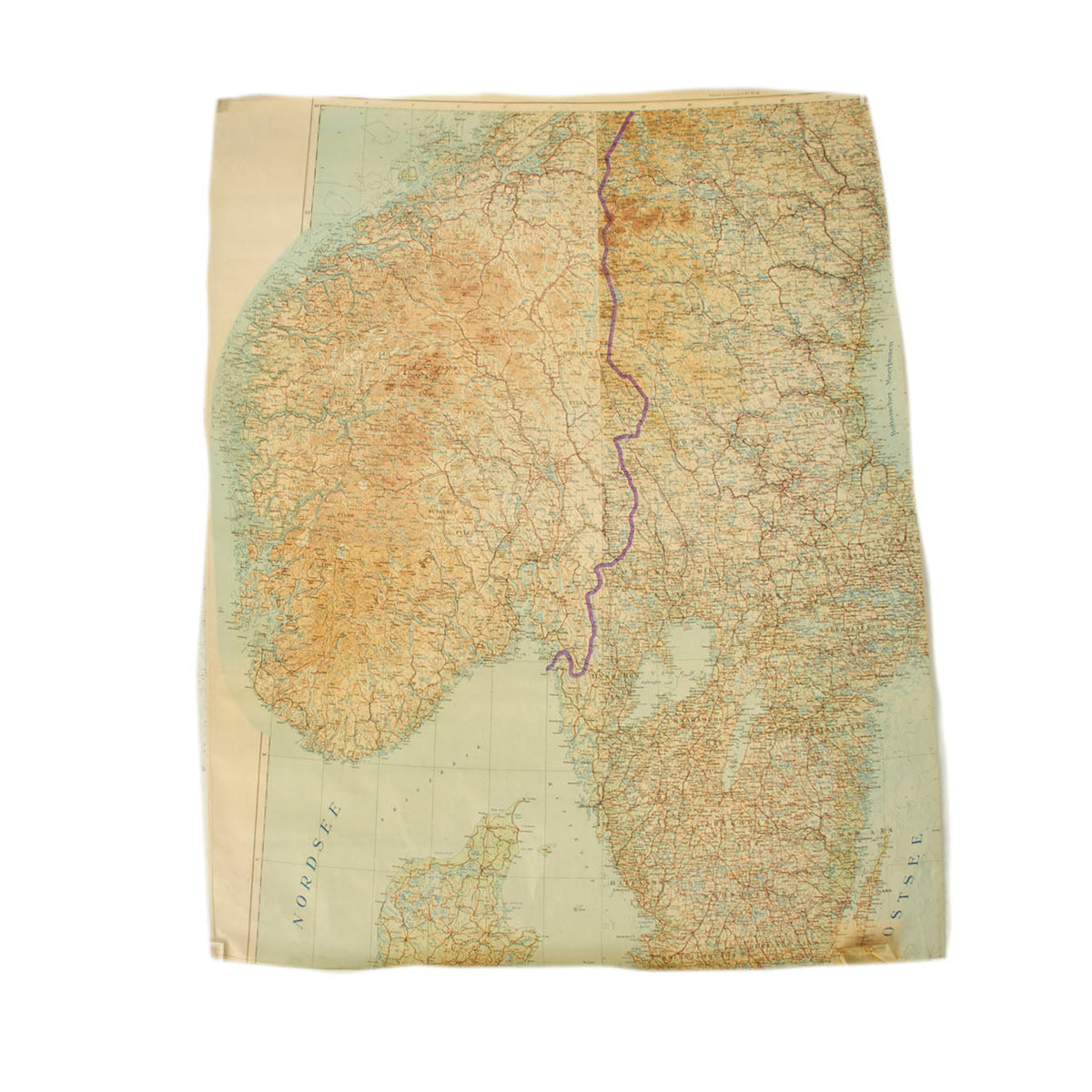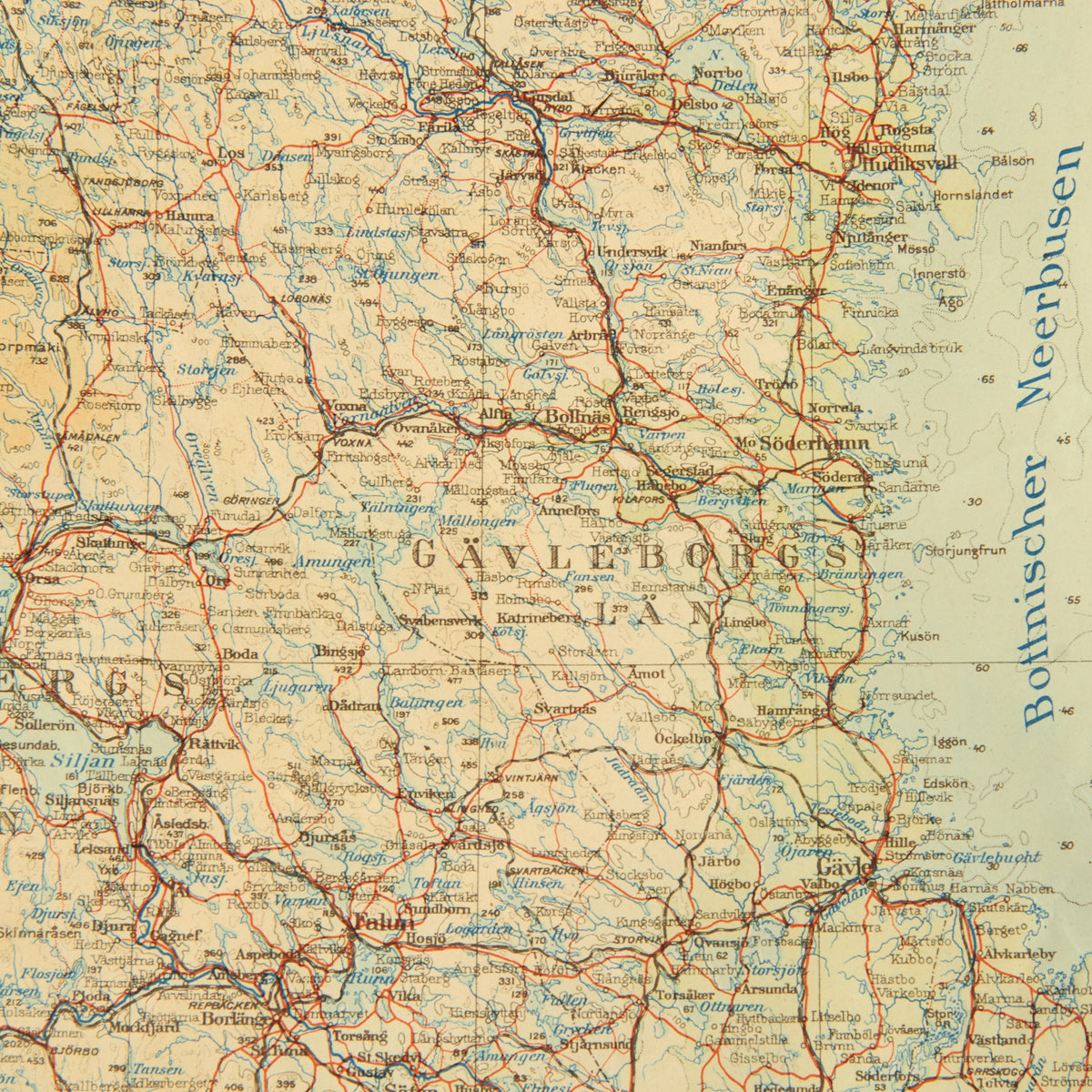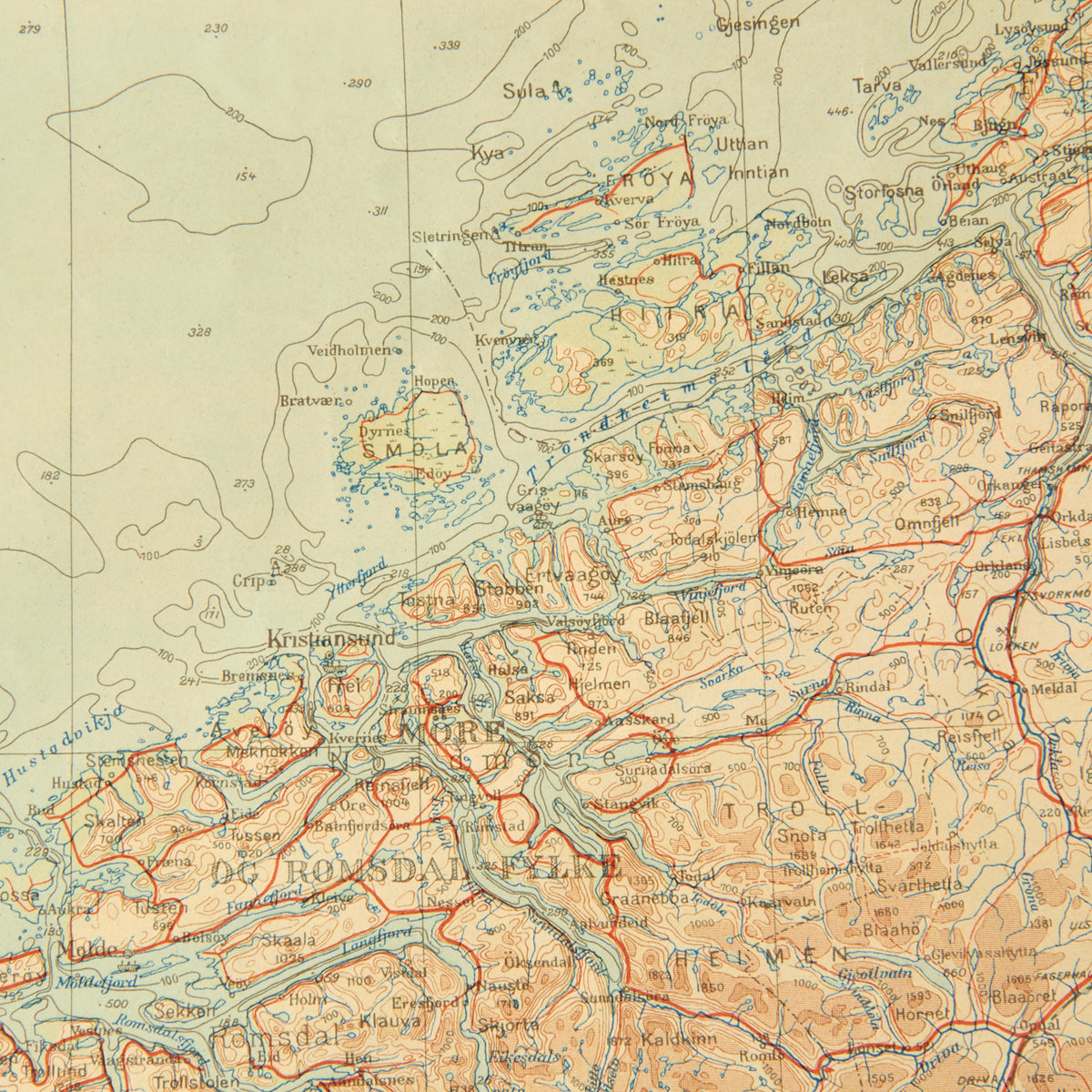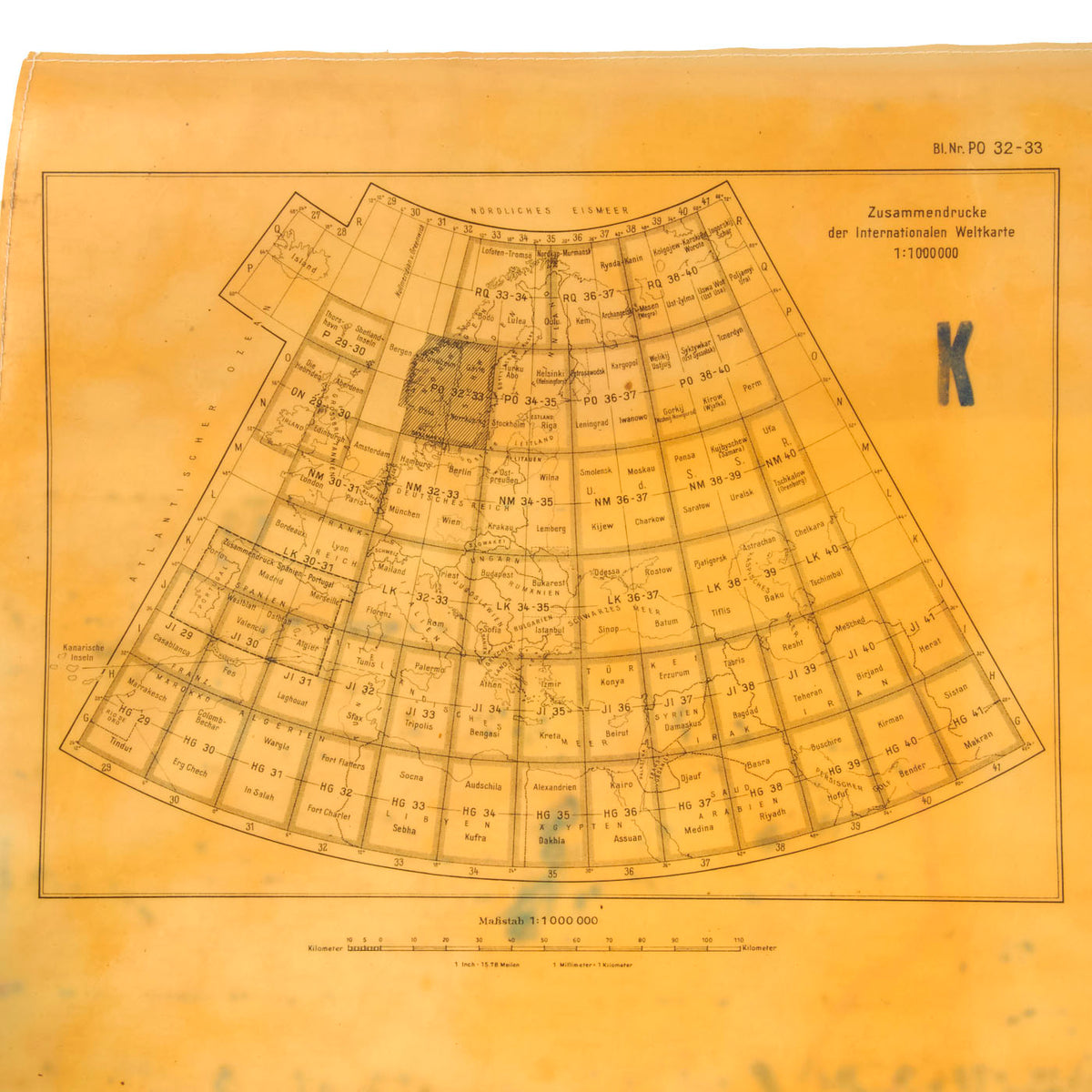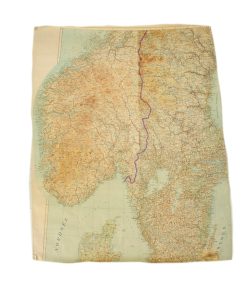Original German WWII Luftwaffe Navigator Soft Laminate “Half” Map of North Sea and Baltic Sea, Denmark Original Items
$ 175,00 $ 70,00
Original Item: Only One Available. The German invasion of Denmark, sometimes known as the Six Hour War due to the short length, was the German attack on Denmark on 9 April 1940, during the Second World War. The attack was a prelude to the invasion of Norway (German: Weserübung Nord, 9 April – 10 June 1940).
Denmark’s strategic importance for Germany was limited. The invasion’s primary purpose was to use Denmark as a staging ground for operations against Norway, and to secure supply lines to the forces about to be deployed there. An extensive network of radar systems was built in Denmark to detect British bombers bound for Germany.
The attack on Denmark was a breach of the non-aggression pact Denmark had signed with Germany less than a year earlier. The initial plan was to push Denmark to accept that German land, naval and air forces could use Danish bases, but Adolf subsequently demanded that both Norway and Denmark be invaded.
Denmark’s military forces were inferior in numbers and equipment, and after a short battle were forced to surrender. After fewer than two hours of struggle, the Danish Prime Minister Thorvald Stauning stopped the opposition to the German attack, for fear that the Germans would bomb Copenhagen, as they had done with Warsaw during the invasion of Poland in September 1939. Due to communication difficulties, some Danish forces continued to fight, but after a further two hours, all opposition had stopped.
Lasting approximately 6 hours, the German ground campaign against Denmark was one of the shortest military operations of the Second World War.
This is an excellent example of a completely original soft-laminated aviation map of Denmark. As was done with many Luftwaffe Fliegerkarte, this map is laminated on some sort of soft laminate making it waterproof and so it can be folded and unfolded many times without ripping. Because of the period German lamination, this map is still in very nice condition and completely readable.
The map does not have any date stamps visible. This 36” x 28 ½” map has roads, towns/cities, major highways, mountain ranges, bodies of water and other land identifiers featured on the map. The reverse side has a small 1:000 000 aeronautical map of the world.
Fast Shipping with Professional Packaging
Thanks to our longstanding association with UPS FedEx DHL, and other major international carriers, we are able to provide a range of shipping options. Our warehouse staff is expertly trained and will wrap your products according to our exact and precise specifications. Prior to shipping, your goods will be thoroughly examined and securely secured. We ship to thousands clients each day across multiple countries. This shows how we're dedicated to be the largest retailer on the internet. Warehouses and distribution centres can be located throughout Europe as well as the USA.
Note: Orders with more than one item will be assigned a processing date depending on the item.
Before shipping before shipping, we'll conduct a thorough inspection of the items you have ordered. Today, the majority of orders will be delivered within 48 hours. The delivery time will be between 3-7 days.
Returns
The stock is dynamic and we cannot completely manage it because multiple stakeholders are involved, including our factory and warehouse. So the actual stock may alter at any time. It's possible that you may not receive your order once the order has been made.
Our policy is valid for a period of 30 days. If you don't receive the product within 30 days, we are not able to issue a refund or an exchange.
You can only return an item if it is unused and in the same state as the day you received it. You must have the item in its original packaging.
Related products
Uncategorized
Uncategorized
Uncategorized
Uncategorized
Uncategorized
Uncategorized
Uncategorized
Armoured Fighting Vehicles of the World: AFVs of World War One (Hardcover Book) New Made Items
Uncategorized
Uncategorized
Armored Burgonet Helmet & Polearm from Scottish Castle Leith Hall Circa 1700 Original Items
Uncategorized
Australian WWII Owen MK1 Machine Carbine SMG Custom Fabricated Replica with Sling Original Items
Uncategorized
Uncategorized
Uncategorized
Band of Brothers ORIGINAL GERMAN WWII Le. F.H. 18 10.5cm ARTILLERY PIECE Original Items
Uncategorized
Uncategorized
Uncategorized
Uncategorized
